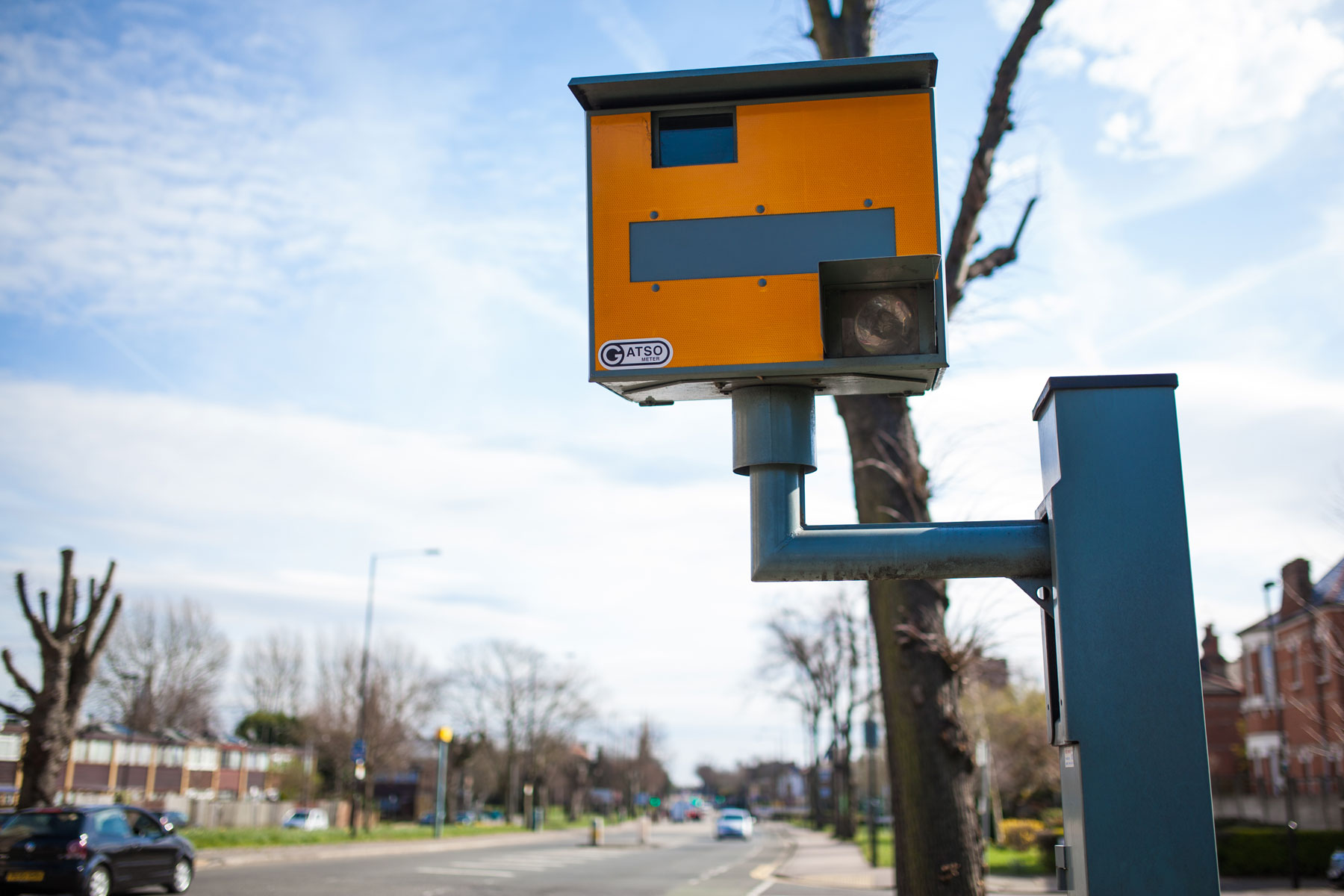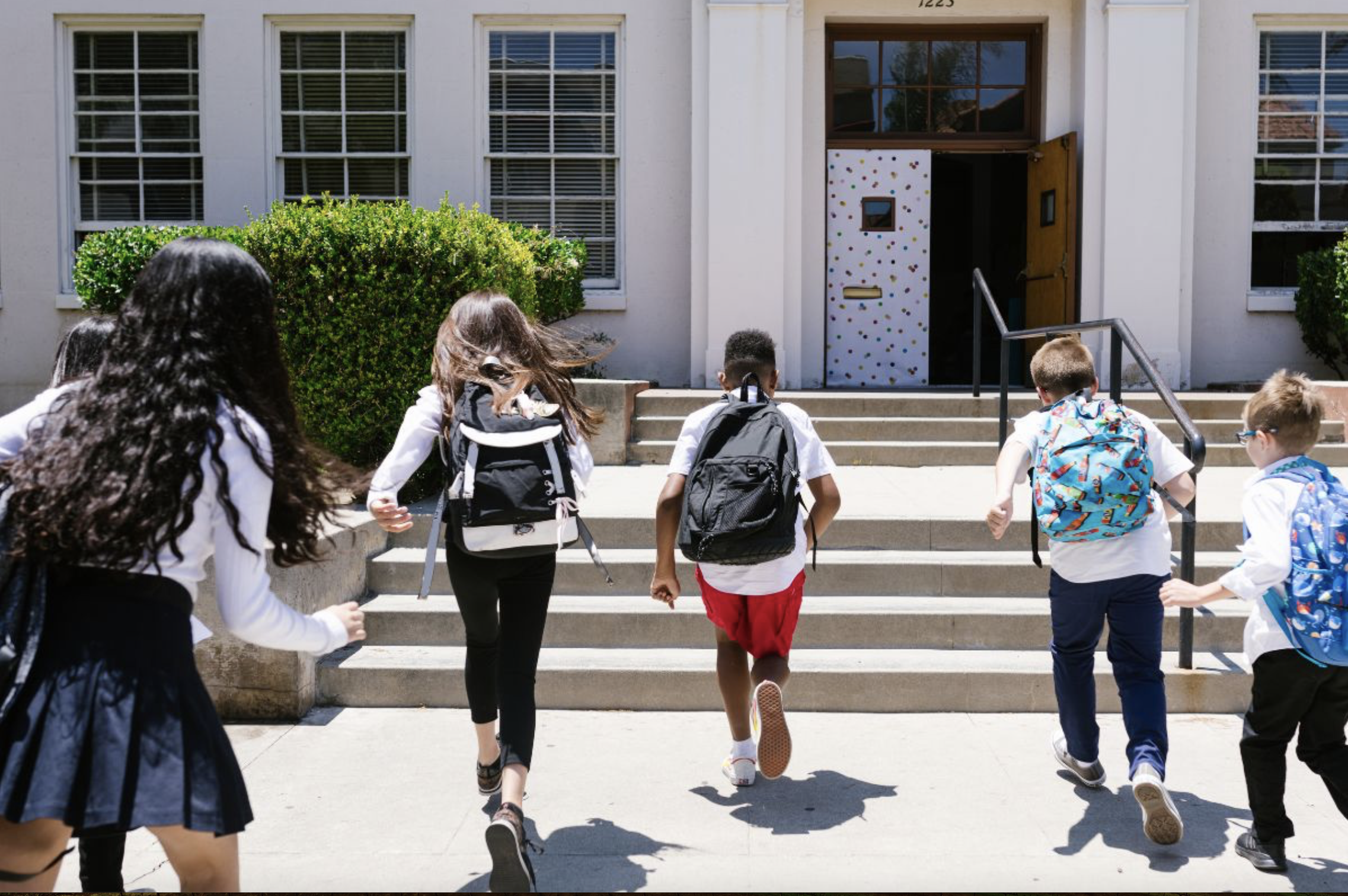Editor's note: Read Streetsblog Chicago's analysis of the University of Illinois at Chicago and ProPublica reports on Chicago traffic cameras, including some criticism of ProPublica's approach, plus comments from transportation experts and advocates on how the city should move forward, here.
When are automated speed cameras an equitable tool for roadway safety — and when are they merely creating speed traps that disincentivize cities from making roadways safe because of the money that's coming in?
That thorny question is at the heart of the discourse over a recent ProPublica investigation into Chicago's automated enforcement program that found that the 38 percent of speed camera tickets were sent to residents of majority-Black ZIP codes, despite the fact that those ZIP codes account for just 27 percent of the Windy City's population — and the fact that the cameras themselves were not disproportionately concentrated in Black neighborhoods.
Journalists Emily Hopkins and Melissa Sanchez said the discrepancy stemmed in large part from road design in Chicago's BIPOC neighborhoods, where there are a preponderance of wide, highway-like roads that signal to drivers that it's okay to travel quickly. Thanks to decades of racist policy, communities of color are significantly more likely to be located in close proximity to highways, industrial areas, and high-speed arterials that prioritize the speed of drivers over the safety of residents.
That theory got additional attention after the release of a separate University of Illinois Chicago study the same day, which found that cameras located in Black neighborhoods actually issued a disproportionate share of the city's speeding tickets, regardless of whether the ticketed drivers themselves were residents of those neighborhoods. As a result, the ProPublica article argued, Black motorists were "hit with more than half a billion dollars in penalties over the last 15 years, contributing to thousands of vehicle impoundments, driver’s license suspensions and bankruptcies."
The findings prompted a fierce debate among street safety advocates on Twitter. Some argued that Hopkins and Sanchez's investigation didn't definitively prove that BIPOC motorists were receiving the brunt of the ticketing burden, since the researchers only had access to the racial demographics of the ZIP codes where tickets were sent, not the race of the drivers themselves; others questioned their decision to de-emphasize the safety benefits of automated enforcement, which the UIC study found had decreased the expected number of fatal and serious injury crashes by 15 percent citywide between 2015 and 2017, albeit not at every camera site.
Others advocates, though, praised the piece for exploring the interlocking structural reasons why cameras aren't a cure-all for racism in traffic enforcement — and noted that those structures extend far beyond Chicago.
A red light camera can not give you a ticket if you don't run a red light. It does not care if you are black or white when running that red light
— The Notorious S.E.B. (@bigseb31213) January 11, 2022
Absolutely incredible that the face of this article is a guy with 11 traffic violations, including running 3 red lights, in a year
The case for speed cameras
Of course, the debate over the role of automated enforcement in America isn't exactly new — even if the stakes have never felt higher.
The United States is still very much in the throes of a national reckoning over police killings of Black and brown Americans — many of which occur in the context of pretextual traffic stops — which has spurred calls for law enforcement officers to be removed from roads and replaced with automated technology. That movement has dovetailed with a historic surge in traffic violence, driven in large part by purchases of bigger cars, increases in speeding and other reckless driving behaviors during the pandemic, as well as a contentious battle over federal infrastructure funding that could help slow down drivers through safe infrastructure.
In the midst of that morass, many advocates have looked to automated enforcement as one of the best solutions available to cities with urgent safety problems but few options — particularly antiracist ones.
Data shows that speed makes a difference in the severity of a crash, with even incremental reductions in speed greatly increasing the likelihood of an individual avoiding death or serious injury in the event of a crash. pic.twitter.com/XyCSgtYVtA
— CDOT (@ChicagoDOT) October 28, 2020
To many advocates, automated enforcement seemed an ideal solution to some of the most pressing traffic safety issues of our day. A speed camera, after all, is a machine: it can't wield gun or a baton or a fist, can't exercise "officer discretion" suffused with implicit or explicit racial bias. It's also cheaper, quicker, and easier to implement than a road diet, and deploying one doesn't usually require the months of community engagement, endless traffic studies and onerous environmental reviews that a simple lane-narrowing might require.
Most important, automated enforcement often works. An international 2010 study found that speed cameras reduce fatal and serious injury crashes by 11 to 44 percent, depending on the context in which they're utilized; in a matter of months, New York City's camera program slashed speeding violations by as much as 89 percent in select school zones. Put simply, traffic cameras provide a direct financial incentive for drivers to stop speeding — at least in areas where they know a camera is likely to be watching.
Troubling incentives
Market-minded urbanists, though, point out that drivers aren't the only ones who are subject to financial incentives when a speed camera goes up in their neighborhood — particularly when their city leaders face few restrictions on how they can spend the money they get from that camera.
"I have real qualms when cities are funded through police enforcement and fines," said Scott Beyer author of Market Urbanism: A Vision for Free Market Cities. "So, no, I don’t really look at speed cameras as ideal. The ideal market urbanist method for getting cars to go slower is simply to redesign the roads to essentially force drivers to slow down. If cameras are going to exist, let’s at least spend the revenue on that, so you eventually, you won't even need the camera at all."
Speed cameras are great but the only way they work out is if every dollar of revenue goes toward making driving "harder". As retaliation for their misdeeds.
— Thats DOCTOR MoldyBasil to you thank you very much (@MoldyBasil) January 14, 2022
Unfortunately, that practice isn't the norm in most American cities. A recent study from the Tax Policy Center found that in at least 43 states, including Illinois, "some portion of speeding ticket revenue is distributed to courts and law enforcement," rather than being directed back towards street safety infrastructure — an incentive structure that the report authors warn may cause those institutions to "become reliant on revenue from more speeding tickets being handed out to fund their day-to-day operations, sometimes called the 'broken budget model.'" Others plow ticket revenues back into the general fund.
Speed cameras are great but the only way they work out is if every dollar of revenue goes toward making driving "harder". As retaliation for their misdeeds.
— Thats DOCTOR MoldyBasil to you thank you very much (@MoldyBasil) January 14, 2022
The National Association of City Transportation Officials makes it clear in its Urban Street Design Guide that communities "should never use [automated speed enforcement] to generate revenue," and that cameras should only be deployed as "a tool for reducing speeds and/or achieving compliance with the posted speed limit." But without strong regulations in place to require leaders to spend on safety first, not all of them do.
"Any money that is generated should go back into street safety programs. That’s widely considered best practice," said Jenny O'Connell, senior program manager at NACTO. "It's also pretty widely accepted that any automated enforcement program should be managed administratively, rather than by the police department. If that involves a contractor, that relationship should be set up so that they're not generating more money if the ticket revenues rise, so that everybody’s incentive is to reduce speeding, and the fatal and injury crashes that come with it — not to increase ticketing."
Road design first, enforcement second
The question of how to create a speed camera program that actually stops speeding, though, isn't as simple as regulating how cities can spend the revenues they get from fines.
Both Beyer and O'Connell point out that cities often can't easily redesign their most dangerous roads, because many of them are owned by state transportation authorities that prioritize vehicle throughput for regional motorists over the needs of neighborhood residents — and those residents aren't always given a meaningful opportunity to object when a high-speed thoroughfare goes up near their block. Road-safety projects that are under city purview, meanwhile, often face tough competition for tiny pots of federal and state money aimed at improving safety for vulnerable road users; otherwise, their engineers are often legally obligated to follow auto-centric road design guides that all but guarantee speeding.
"A lot of the reason why these streets are designed this way to begin with is that we have these top-down planning interests that are requiring the streets to be over-engineered," added Beyer. "We should restore local power over those streets and allow choices about road design to be made at the local level. I mean, people always want the traffic in their neighborhoods to be slow."
It is important to point out that these states require their engineers to build roadways in a way that makes it counterintuitive to go the speed limit. And then they blame you (and fine you) for going the actual design speed of the road. https://t.co/pOJD4cykN6
— Beth Osborne (@BethOsborneT4A) January 13, 2022
Of course, some U.S. neighborhoods do have slow roads — if their residents have enough privilege, money and time to advocate for them.
A 2021 study found that three-quarters of the most-dangerous roads for pedestrians in the United States run through low-income neighborhoods, which are themselves disproportionately likely to be communities of color. And as in the Chicago study, in which all the highest revenue-generating cameras were located on four-lane roads, nearly all those corridors were designed explicitly for speed. A whopping 97 percent of the deadly streets identified in the study had at least three lanes; 70 percent had at least five.
U.S. communities, though, don't always bother to track where their most deadly roads even are, much less which segments of the transportation network induce the most deadly behaviors before drivers kill. That makes automated cameras a critical data source — particularly when they're spitting out tons of infractions.
"If a camera is generating a lot of tickets, the idea should never be to keep the camera there, change nothing, and continue to give those tickets out," said O'Connell. "To the extent that there is a non-police-based incentive program [like automated enforcement], the goal always needs to be safety; a really well-designed program would make less money over time, because people are slowing down."
Here are my and other’s recs on making automated enforcement equitable, shared w/ Mayor’s Office in Fall 2017. Over four years of punitive financial harms on Black/Brown ppl to make incremental progress. City expanded program after UIC study confirmed inequities. Infrastructure? https://t.co/Ywu1dILJB5 pic.twitter.com/eR4fzIpP91
— Olatunji Oboi Reed (@theycallmeOboi) January 13, 2022
Until cities are able to make meaningful road design changes, many advocates say it's critical that they at least reform the fine and fee structures that can plunge low-income motorists into a cycle of poverty, by scaling fines and fees to the offenders' ability to pay while also making sure they're commensurate with the potential harm of aggressive driving. Some cities, O'Connell points out, are also exploring fine-fee restorative justice approaches that show promise.
But at the end of the day, she says, reforming road design should still be a city's first line of defense – because in many cases, it could also be the last.
"The thing I have to keep hammering home is this: the best and most important tool that cities have at their disposal to make streets safe and comfortable for everyone on the road is design," she added.






